Another beautiful day in Florence and we are heading out for more art, culture and historic sites. After gathering together as our group, we went towards the Arno River and across the Ponte Vecchio. This medieval stone closed-spandrel segmental arch bridge over the Arno, was spared from destruction during World War II, it is noteworthy for the shops built along it which were originally fish markets but these were moved during the 1500’s and goldsmiths and jewelers have made the bridge their home. Unknown to most visitors, there is a Corridor going over the top – specifically The Vasari Corridor. This elevated enclosed passageway connects the Palazzo Vecchio with the Palazzo Pitti.
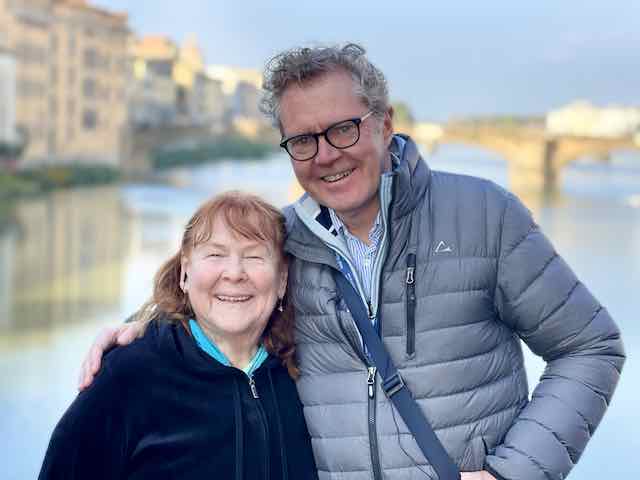
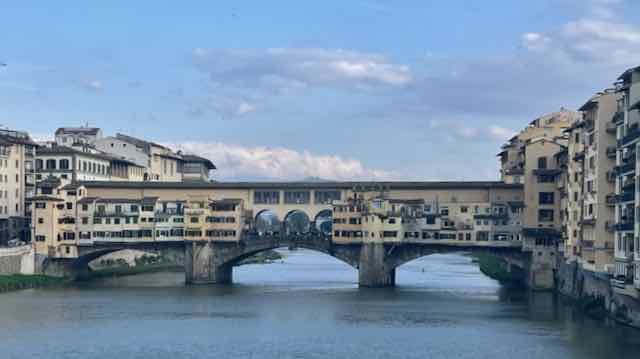
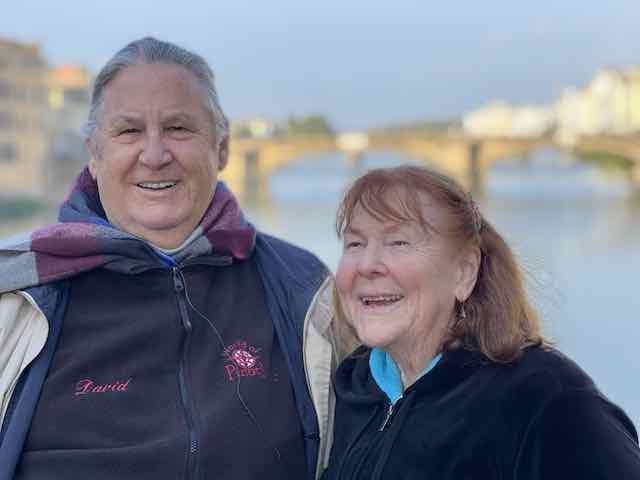
Janeen and Ross King on the Ponte Vecchio
One of our stops, along the way, was at Basilica of Santo Spirito. Inside is a wooden crucifix cross which is reputed to have been carved by Michelangelo. He is said to have carved the nude Jesus when he was 18 and living in the Basilica.

This 53-inch wooden Crucifix was discovered by chance in 1962, in a convent corridor and was so badly overpainted that it was barely recognizable as one of Michelangelo’s artworks.
Our next stop was to the Palazzo Pitti and the Palatine Gallery. The Palazzo Pitti, is a vast, mainly Renaissance, palace. It is situated on the south side of the River Arno, a short distance from the Ponte Vecchio. The core of the present palazzo dates from 1458 and was originally the town residence of Luca Pitti, an ambitious Florentine banker.

The palace was bought by the Medici family in 1549 and was the residence of the Medici dynasty, then of Hapsburg-Lorraine court and lastly of the House of Savoy, hosting the King of Italy from 1865 to 1919. Within the Palace are displayed a huge number of artworks. The Palatine Gallery and Royal and Imperial Apartments occupy the entire first floor of the Palace. The lavish Gallery was founded at the end of the 19thcentury by the Habsburg-Lorraine family who hung about 500 masterpieces in the ceremonial rooms chosen from the main Medici collection. The collection is really overwhelming with paintings by Raphael, Titian, Tintoretto, Caravaggio and Rubens.
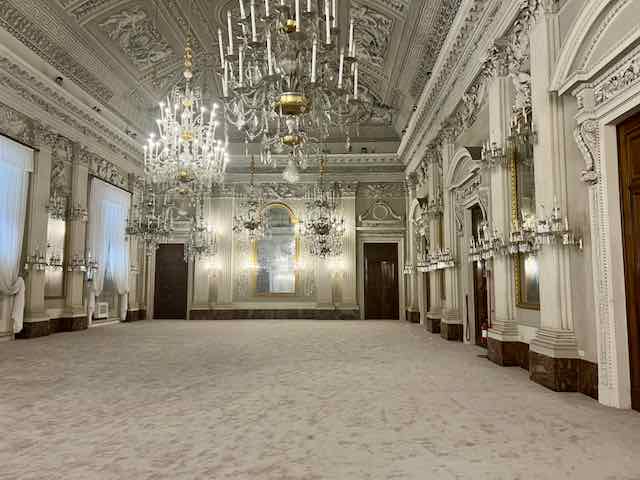
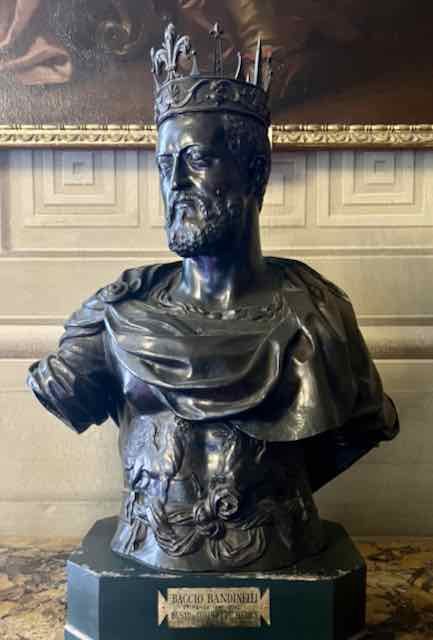
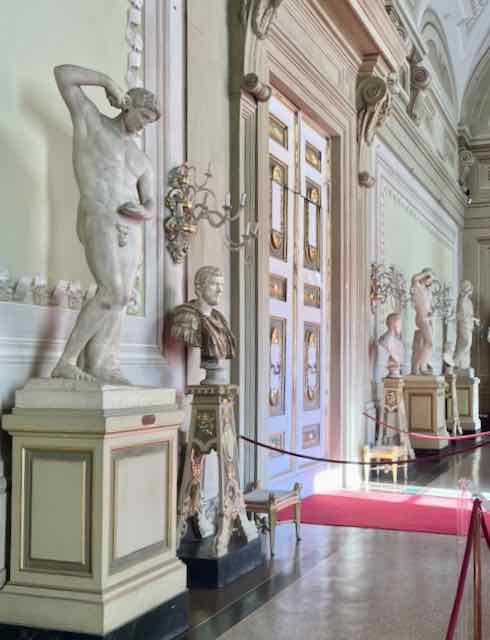
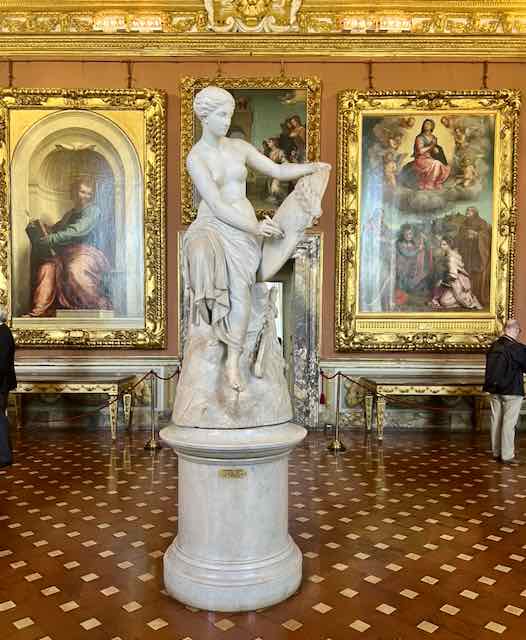
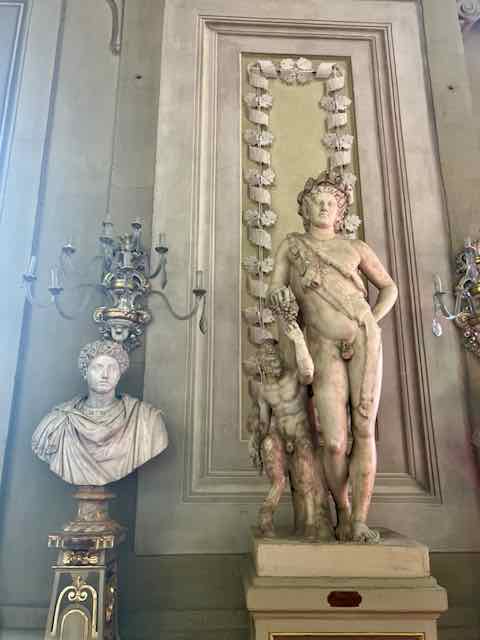

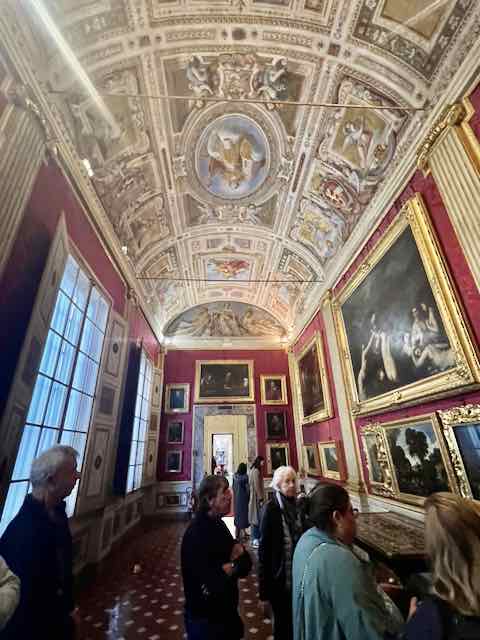

Since our adventure has a focus on Michelangelo and Caravaggio we made a bee line to view the works by Caravaggio. Of course, along the way we saw lots of other wonderful paintings.
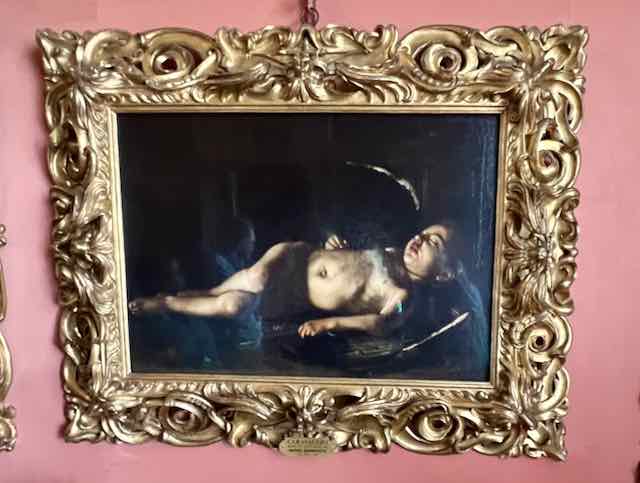



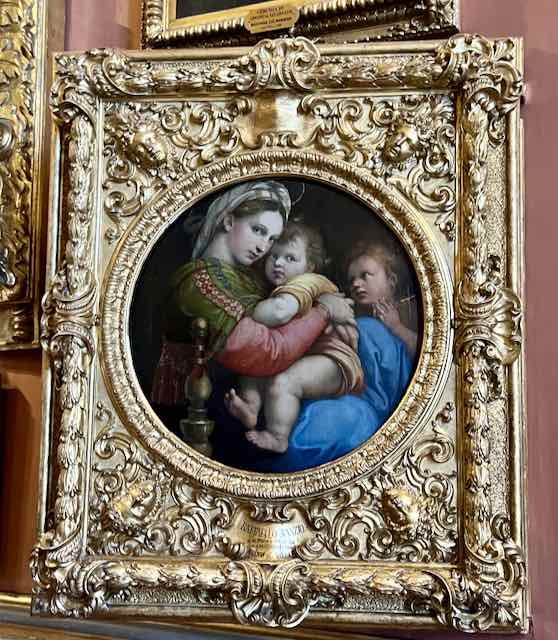
A quick stop at the Gallery of the Academy of Florence to view Michelangelo David, the hall of “prisoners” and several other pieces.
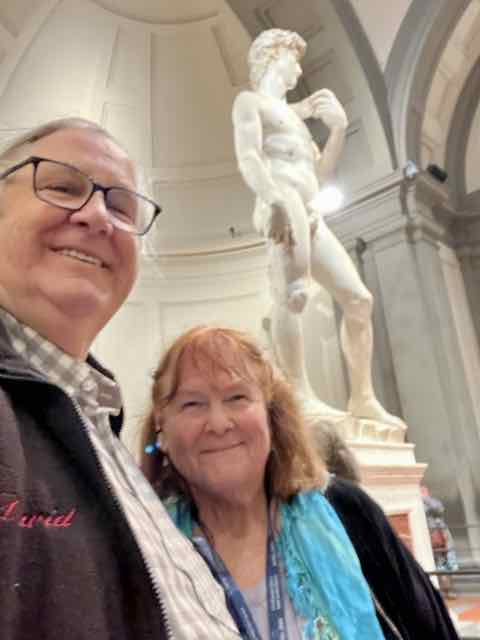


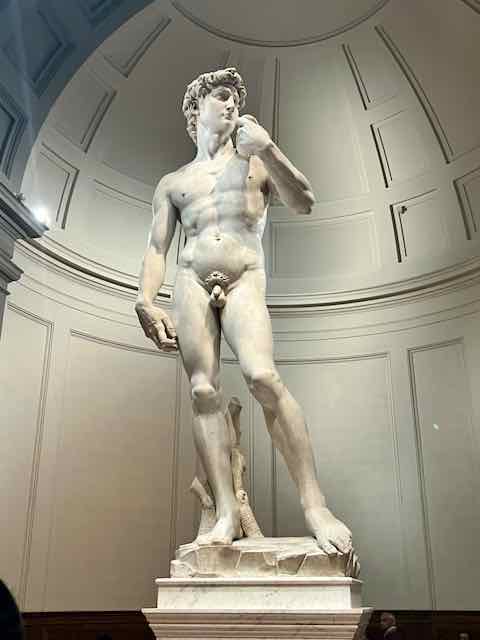
Along the walkway are a number of unfinished works – Michelangelo felt he could see the figures in the stone and was just releasing them.
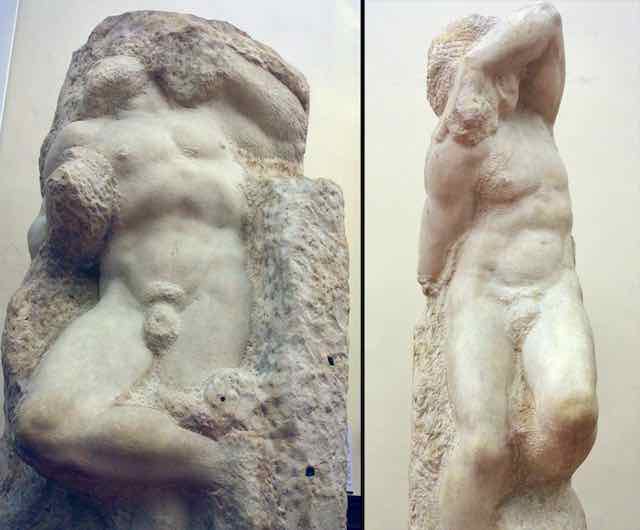
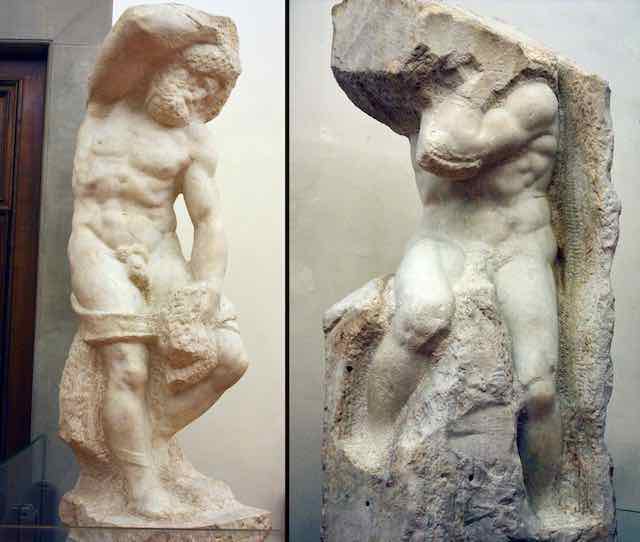
Our next stop was one I have been anticipating for a very long time – the Laurentian Library.
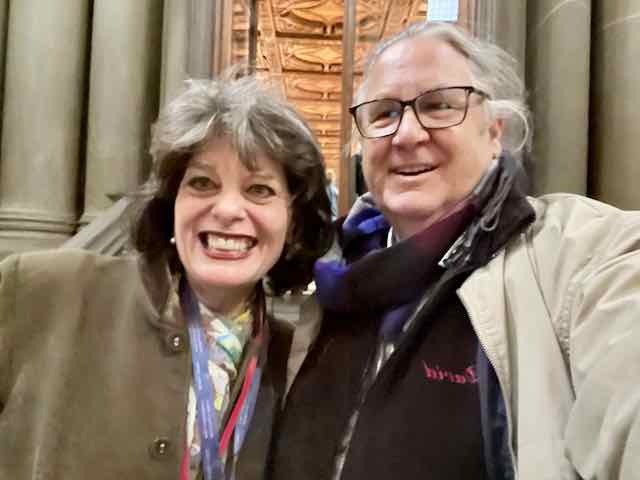
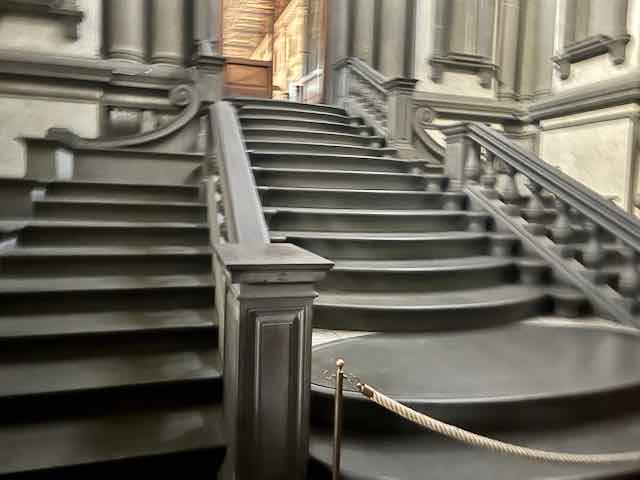
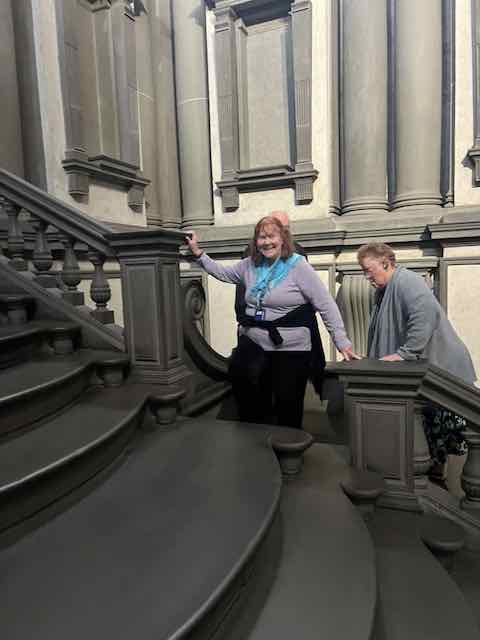
The Laurentian Library is a historic library containing more than 11,000 manuscripts and 4,500 early printed books. Built in a cloister of the Medicean Basilica di San Lorenzo di Firenze under the patronage of the Medici pope Clement VII, the library was built to emphasize that the Medici were no longer just merchants but members of intelligencia and ecclesiastical society. It contains the manuscripts and books belonging to the private library of the Medici family. The library building is renowned for its architecture designed by Michelangelo.
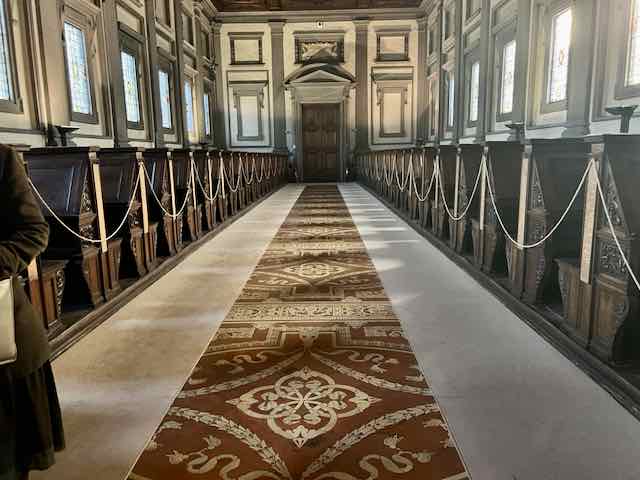
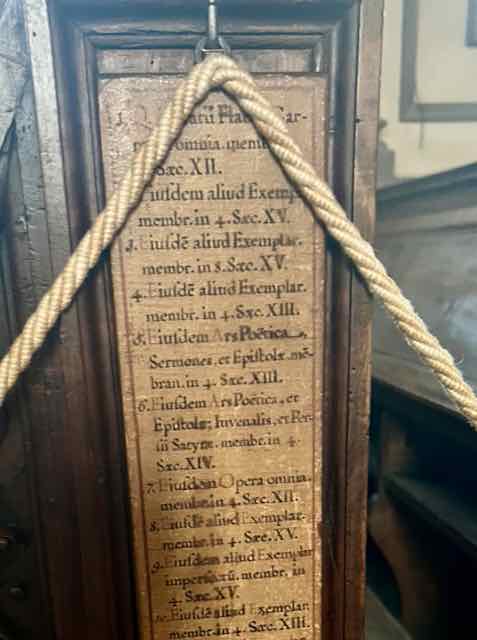
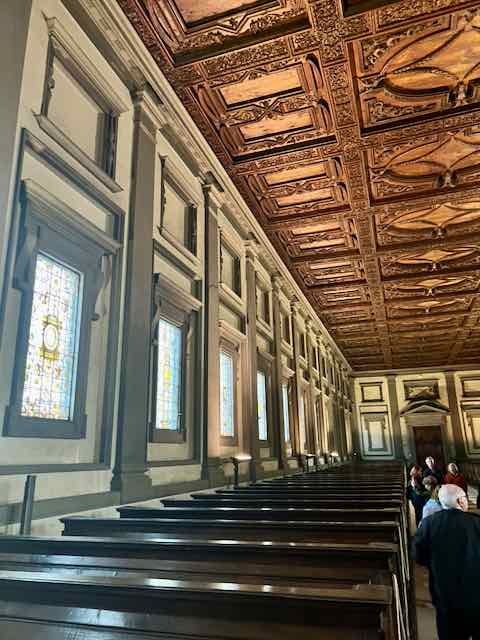
The design created was restrained and beautiful at the same time. The Library was commissioned in 1523 and construction began in 1525; however, when Michelangelo left Florence in 1534, only the walls of the reading room were complete. It was then continued by Tribolo, Vasari, and Ammannati based on plans and verbal instructions from Michelangelo. Michelangelo never returned and thus never saw his designs become reality.
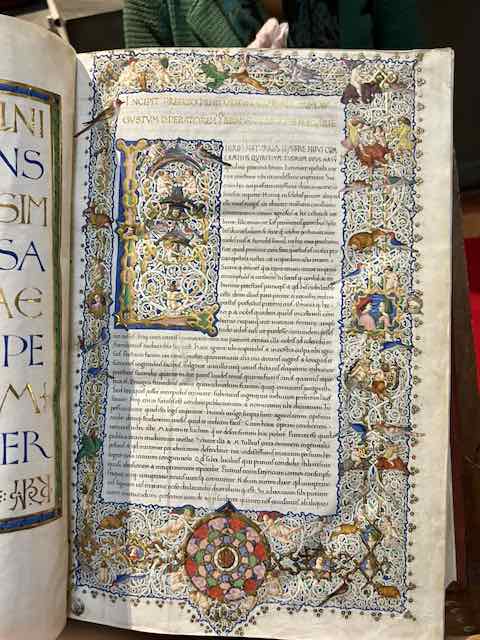
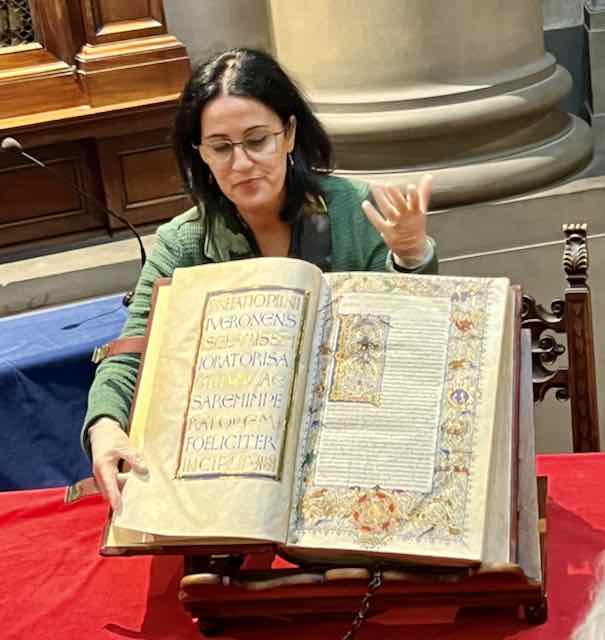
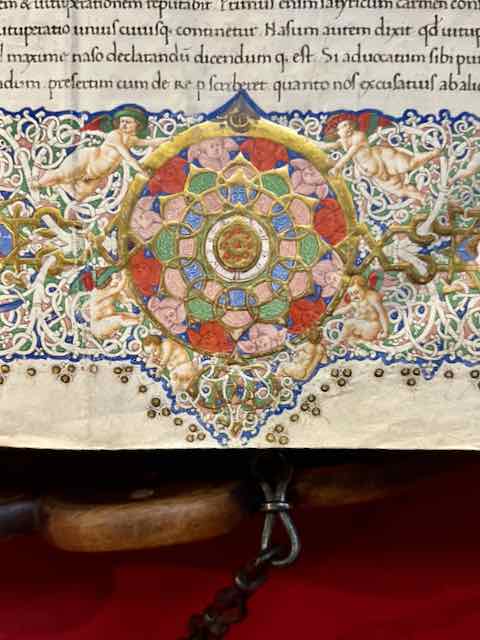
Once we all gathered the Library Curator brought out several books – most of which were part of the original collection. When the library first was opened, all the books were chained to the desks – with a card catalog listing the works on the end of a bench. The chains were necessary so the books didn’t ‘walk out the door’ as they were quite valuable.

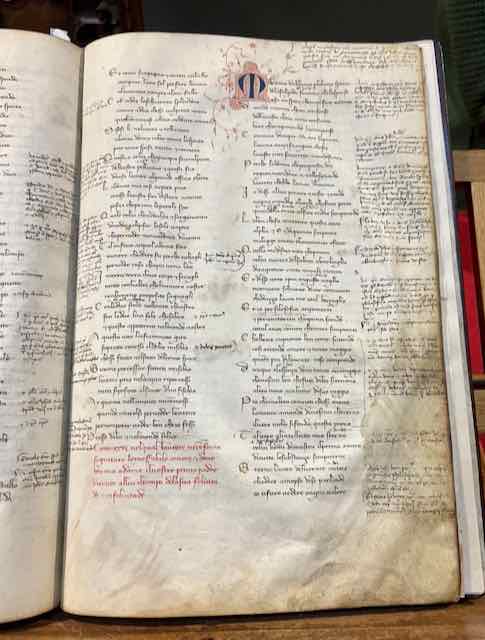
One of the books we saw was an original copy of Dante’s Divine Comedy which he began writing around 1308 and completed around 1321, shortly before the author’s death. Dante’s son wrote comments in the margins of the book. It is widely considered the pre-eminent work in Italian literature and one of the greatest works of Western literature.
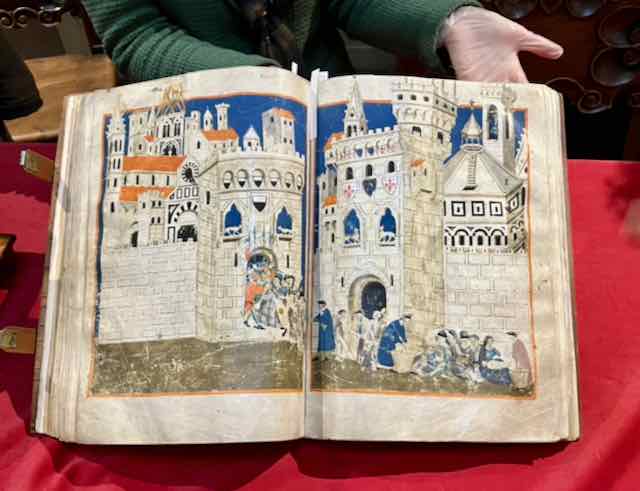
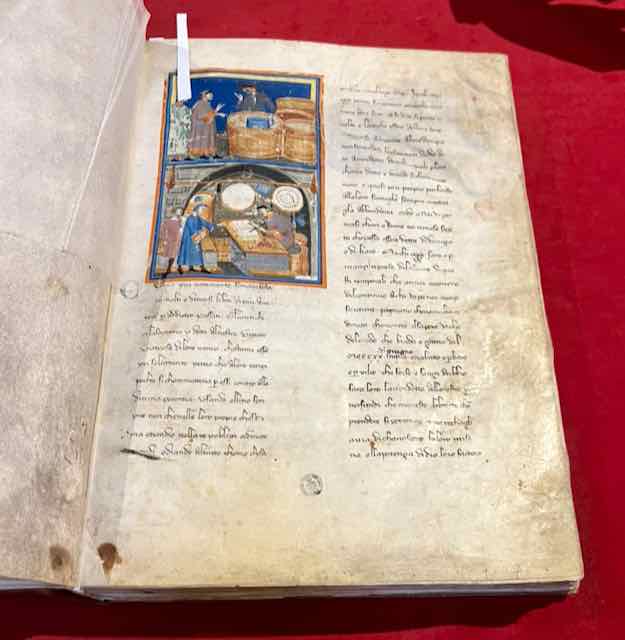
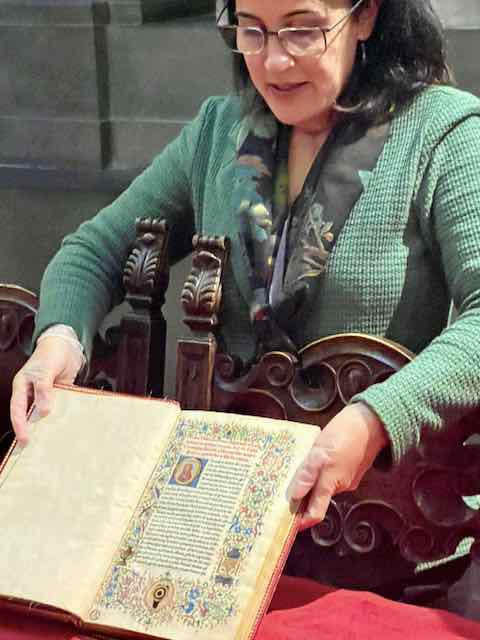
Janeen’s favorite book was a merchant’s book where he had added drawings and comments to his inventory and profit and loss columns. He notes the acceptance of refugees from Siena during conflict years, and the drawings show the buildings and streets of the time.
It was a full day for sure with lots more to come!
David, this blog brought back so many memories for me of when Vern and I visited Florence. Unfortunately, as a retired librarian, I am sorry I did not visit the Laurentian Linrary, The card catalog was, for sure, interesting. The paintings and sculptures were remarkable. In your blog you mentioned the Pointe Vechio River and the jewelry shops of which I purchased several pieces of gold!! Such memories!!!’ Than you
All these works of art must be overwhelming Hard to take in everything as there’s so much to see.